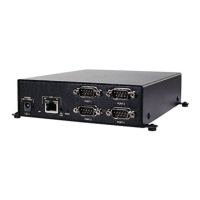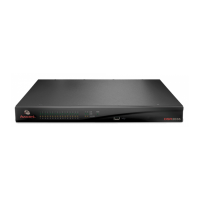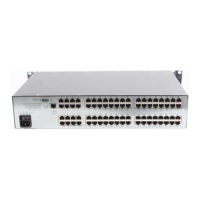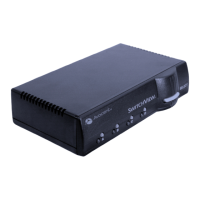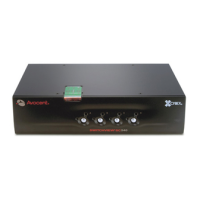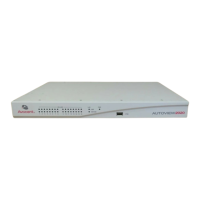12 ESP Serial Hub Installer/User Guide
The BootP or DHCP server may also specify a configuration file using the “bootfile”
parameter. See Chapter 6, beginning on page 55, for more information.
After startup and address configuration
After the ESP serial hub’s network information has been configured, you may configure each of the
ports. Most port operations may be initiated for one port or all ports.
To configure ports:
• Using the web interface - see Displaying or Changing Serial Port Attributes on page 33,
Displaying or Changing Port Connection Methods on page 33 and Displaying or Changing the
Serial Port Physical Interface on page 34.
• Using the configuration utility - see Displaying or Changing Serial Port Attributes on page 46,
Displaying or Changing Connection Methods on page 46 and Displaying or Changing the
Serial Port Physical Interface on page 48.
• Using a configuration file - see Port Interface Command on page 57, Port Connection Method
Commands on page 57 and Port Attributes Command on page 58.
When Changes Take Effect
When you change values, the ESP serial hub’s memory is updated immediately. Some changes take
effect immediately; others take effect when the next connection is established with a port or after
the hub is rebooted.
Table 2.7 indicates when each type of change takes effect.
Changing a web interface/configuration utility password takes effect the next time the web
interface or the configuration utility is accessed.
Table 2.7: When Changes Take Effect
Action Immediately
On next
connection
After reboot
Network address changes (IP, gateway, subnet) X
Network interface speed X
Enabling/disabling the hub’s configurable features X
Changing a port’s physical interface X
Enabling/disabling a port’s connection methods X
Changing a port’s attributes X
Updating a Flash image X
Downloading a configuration file X
